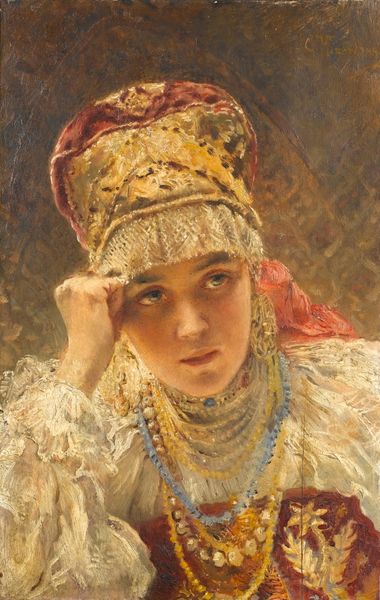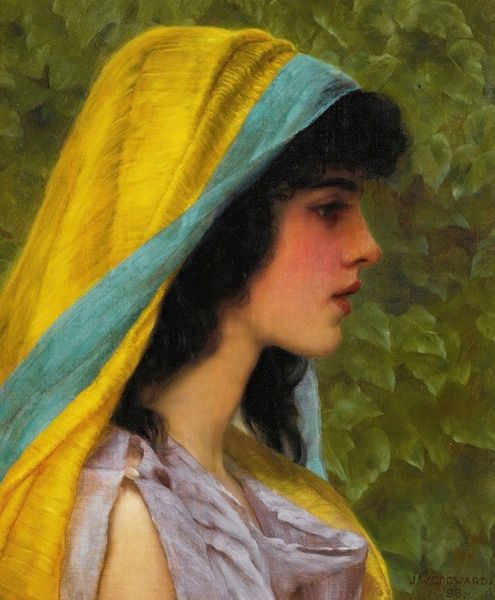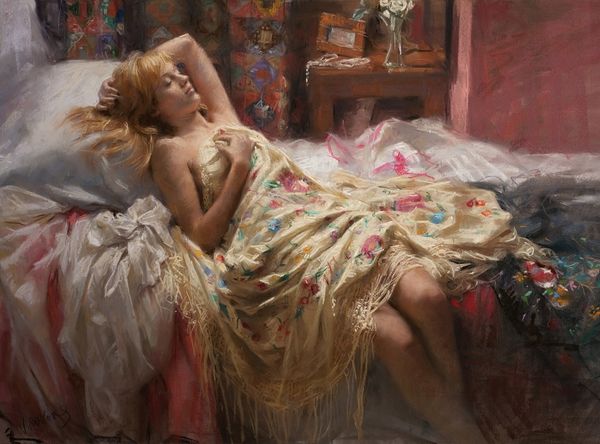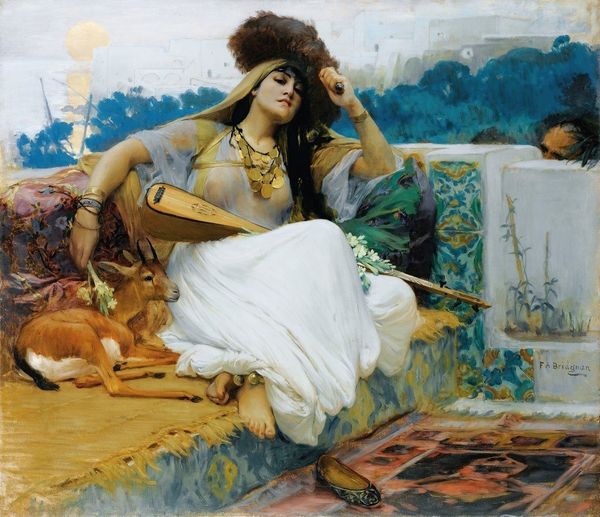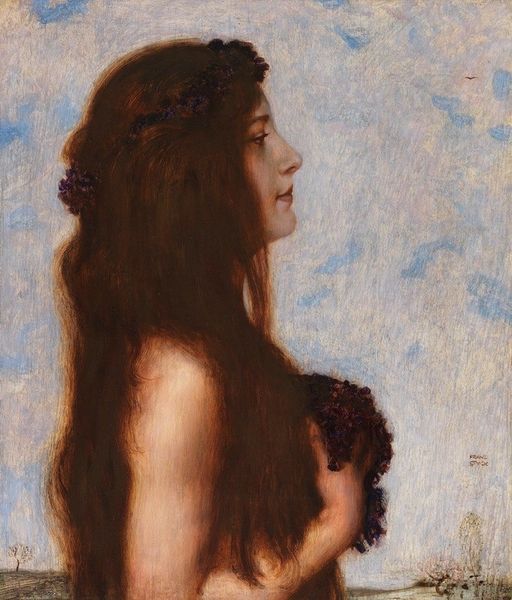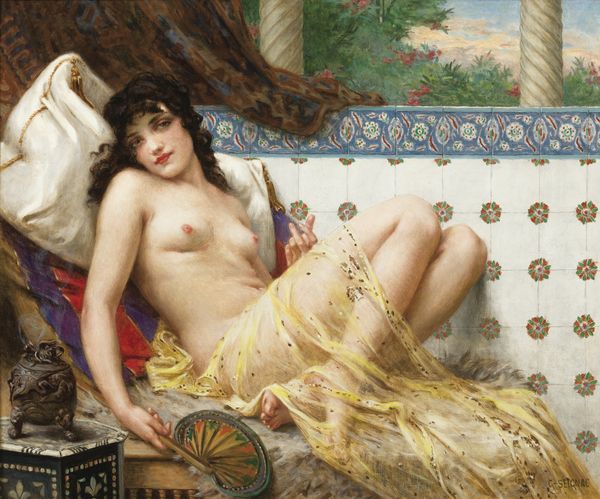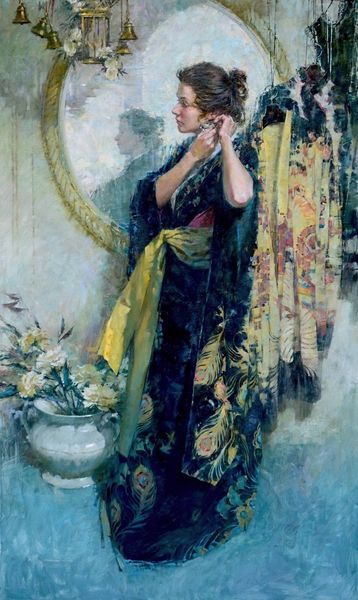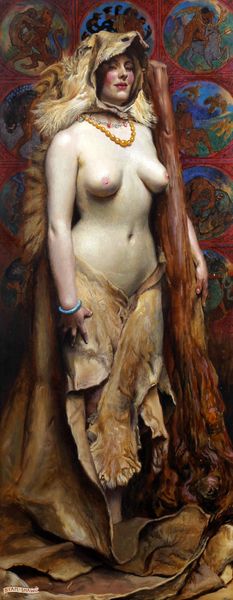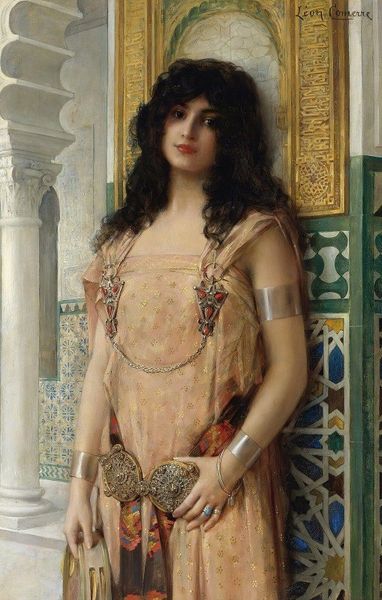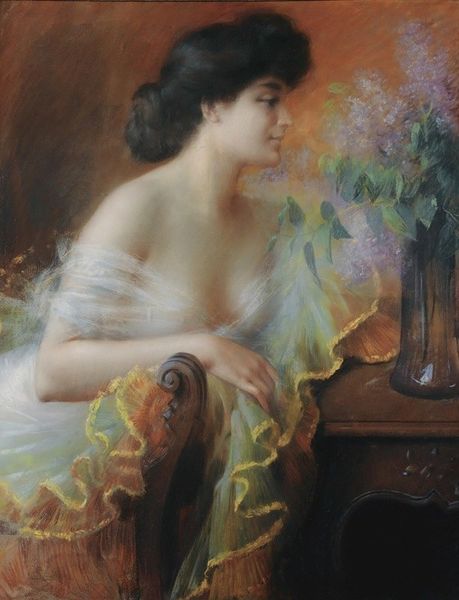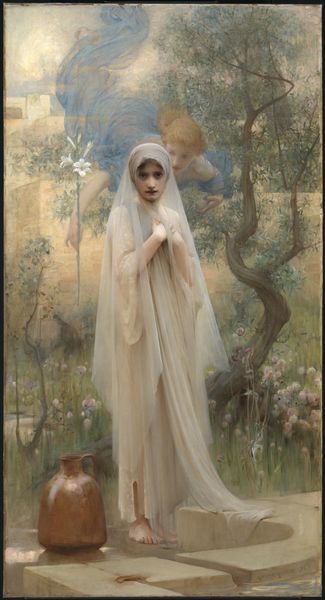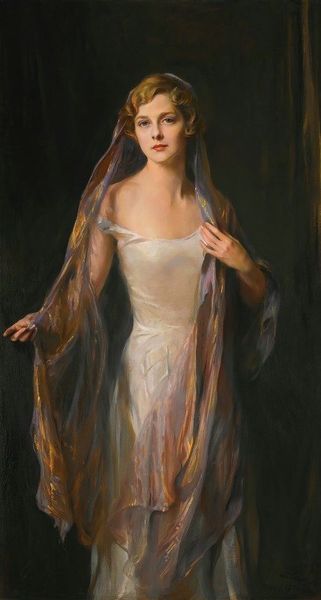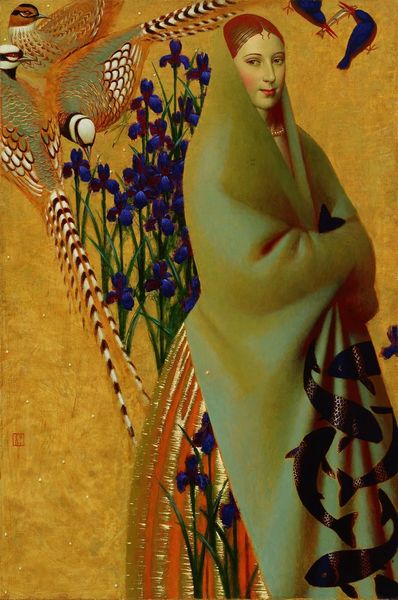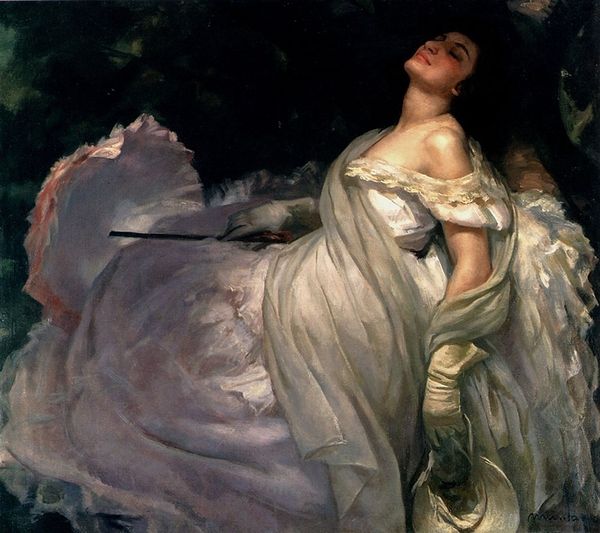
Copyright: Public domain
Curator: There's a striking intensity in the face. I’m drawn in immediately by those dark eyes peering out from behind the sheer orange fabric. Editor: Indeed. We are currently looking at Paul-Albert Besnard’s “La Favorite,” painted in 1892. It's an oil painting, and while decidedly a portrait, the surrounding botanical elements nudge it towards genre painting. The orange tones give it quite a theatrical mood. Curator: Absolutely theatrical! The figure emerges from this verdant, almost dreamlike space, adorned in what appears to be a beaded veil. The texture and light seem almost otherworldly, as if we’re catching a glimpse into some intimate, symbolic drama. Does the veil serve as concealment, or perhaps a mode of emphasizing allure, hinting at something hidden yet coveted? Editor: It's fascinating how Besnard situates this image within the historical context of late 19th-century French society. While it embodies some elements of Romanticism, one cannot deny the orientalist themes cropping up in art at this time. The sitter, perhaps a performer or actress, may play to these desires and fantasies. How does she become perceived under the lens of gender and class in relation to those dynamics? Curator: I see her almost as a priestess. The bright orange might denote heightened spirituality and the lilies and roses reference concepts of purity and passion—classic attributes linked with feminine power and potential during that era. I am sure these concepts shaped the social norms regarding femininity at this time as well. Editor: An interesting comparison. It pushes me to consider her against the wider role of the arts and entertainment industries shaping these cultural codes. Besnard exhibited at the Salon—these images were publicly consumed and endlessly reproduced and debated. She existed within a marketplace of images, actively reflecting social debates through painting. Curator: Thinking about her agency, it seems “La Favorite” encapsulates that moment of powerful unveiling, almost confronting the gaze of the viewer while retaining an aura of enigmatic beauty. Editor: Ultimately, she allows us to engage with a much larger picture regarding 19th century visual and social politics. The questions the piece conjures about its public's relationship with image creation continue to feel incredibly resonant today.
Comments
No comments
Be the first to comment and join the conversation on the ultimate creative platform.
